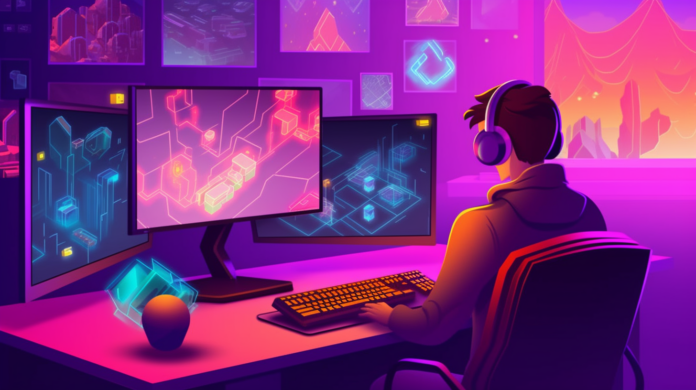The gaming industry has evolved dramatically over the past few decades, from the early days of arcade games and home consoles to the present-day, immersive online multiplayer experiences. The rapid advancements in technology have not only transformed the way we play games but also how we interact with them. Enter Web3 gaming—a new era of decentralized, blockchain-based gaming that promises to revolutionize the industry. In this blog post, we’ll introduce you to the world of Web3 gaming, explore its key differences from traditional gaming, and discuss how it’s shaping the future of gaming.
What is Web3 Gaming?
Web3 gaming refers to a new generation of gaming experiences built on decentralized, blockchain-based platforms. This innovative approach combines gaming with the unique features of blockchain technology, such as secure and transparent transactions, digital asset ownership, and decentralized governance. In Web3 gaming, players can enjoy a wide range of gaming experiences and participate in the creation, management, and monetization of these games through the use of cryptocurrencies, non-fungible tokens (NFTs), and decentralized autonomous organizations (DAOs).
Critical Differences Between Web3 Gaming and Traditional Gaming
- Ownership of digital assets: Traditional gaming platforms typically limit players’ ownership of in-game purchases. These assets are often restricted to the platform or game, and players cannot transfer or trade them outside the game. In Web3 gaming, players have actual ownership of their digital assets, such as in-game items, characters, and virtual real estate, thanks to blockchain’s ability to record and verify ownership through NFTs.
- Play-to-earn model: Unlike traditional gaming, where players often spend money on in-game purchases without any financial return, Web3 gaming introduces the play-to-earn model. This allows gamers to earn cryptocurrencies, NFTs, or other rewards by playing, creating, or contributing to the gaming ecosystem. This model incentivizes players to participate and invest time and resources in the game.
- Decentralization: Traditional gaming platforms are typically controlled by a centralized authority or company, which dictates the rules and development of the game. Web3 gaming, on the other hand, leverages decentralized platforms and DAOs, enabling players to have a say in the game’s development, governance, and future direction.
- Interoperability: In traditional gaming, each game operates in isolation, with little to no interaction between different games or platforms. Web3 gaming encourages interoperability between games and platforms, allowing assets, characters, and achievements to be used across multiple games within the same ecosystem, thus creating interconnected gaming experiences.
- Enhanced security and transparency: Blockchain technology underpins Web3 gaming, ensuring secure and transparent transactions. This allows players to trust the system and reduces the risk of fraud, cheating, or hacking that can plague traditional gaming platforms.
The Future of Web3 Gaming
As the adoption of blockchain technology and cryptocurrencies continues to grow, so does the potential for Web3 gaming to transform the gaming industry. The decentralized nature of Web3 gaming offers opportunities for innovation, collaboration, and the democratization of game development. This shift in power dynamics is expected to foster a more inclusive and diverse gaming ecosystem, giving rise to new genres, experiences, and revenue models.
Furthermore, integrating virtual and augmented reality technologies with Web3 gaming can create immersive metaverse experiences that blur the lines between the physical and digital worlds. These interconnected, user-generated virtual worlds could become the next frontier for gaming, social interaction, and digital commerce.
Finally, the play-to-earn model and NFT-based digital asset ownership could revolutionize the way players engage with games and the value they derive from them. This new economic model could attract a broader audience to gaming, making it a viable source of income for many and a powerful driver of economic growth in the digital realm.
Conclusion
Web3 gaming marks a paradigm shift in the gaming industry, offering new opportunities for players, developers, and investors. By combining the power of blockchain technology with the ever-evolving gaming world, Web3 gaming promises to reshape how we interact with and experience games. As the industry continues to evolve and adopt these groundbreaking innovations, we can expect to see a more decentralized, interconnected, and dynamic gaming landscape that transcends traditional boundaries and unlocks new possibilities for players and creators worldwide.
